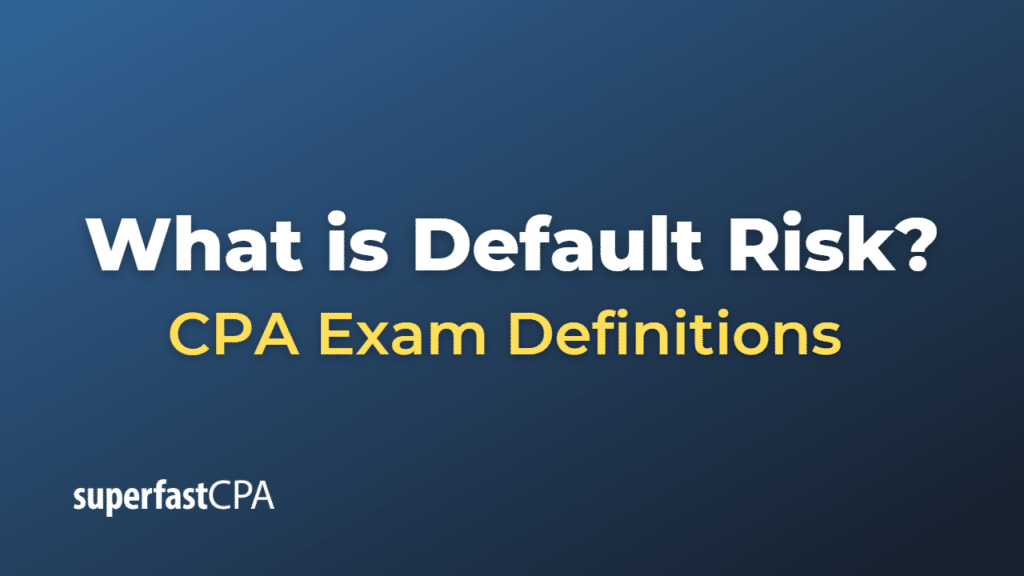Default Risk
Default risk, also known as credit risk, is the risk that a borrower will not repay a loan or fulfill a contractual obligation. If a borrower defaults on a loan or fails to make payments on time, the lender suffers financial loss. This risk is why lenders charge interest on loans, as compensation for taking on the potential risk.
Default risk is particularly relevant in the bond market. When a company issues bonds, the company is borrowing money from investors. The company promises to repay the borrowed amount (the principal) on a specific date (the maturity date) and to make periodic interest payments (coupon payments) until that date. If the company runs into financial trouble and is unable to make the interest payments or repay the principal, the company defaults, and the investors suffer a loss.
The level of default risk can greatly influence the interest rate on a loan or bond. Higher default risk leads to higher interest rates, while lower default risk leads to lower interest rates. This is why corporate bonds typically have higher interest rates than government bonds. Corporations are generally considered to have a higher default risk compared to the government.
Credit rating agencies assess and rate default risk. These agencies analyze a company’s financial condition and assign a credit rating that reflects the company’s ability to repay its debts. The highest ratings indicate the lowest perceived default risk.
Example of Default Risk
Let’s consider a hypothetical example involving two companies, Company A and Company B, each of which wants to issue bonds to raise capital:
Company A is a well-established corporation with a strong financial history and consistent revenue growth. It has a low debt-to-equity ratio and has always made timely payments on its existing debt obligations. As a result, a credit rating agency assigns Company A a high credit rating, indicating a low default risk.
Company B, on the other hand, is a smaller corporation that has recently experienced financial difficulties. It has a high debt-to-equity ratio and has struggled to make timely payments on its existing debts. The credit rating agency assigns Company B a low credit rating, indicating a higher default risk.
When both companies issue bonds, investors will demand a higher interest rate (yield) on Company B’s bonds to compensate for the higher default risk. In contrast, Company A’s bonds will likely have a lower interest rate due to the lower perceived risk.
As an investor, if you decide to purchase bonds issued by Company B, you would be taking on a higher default risk, but you would also receive a higher interest rate in return. In the event that Company B defaults on its bond payments, you could potentially lose your investment or receive a lower amount than initially expected. Conversely, if you choose to invest in Company A’s bonds, the default risk would be lower, but you would receive a lower interest rate in return. This illustrates the trade-off between risk and return in fixed-income investing.













